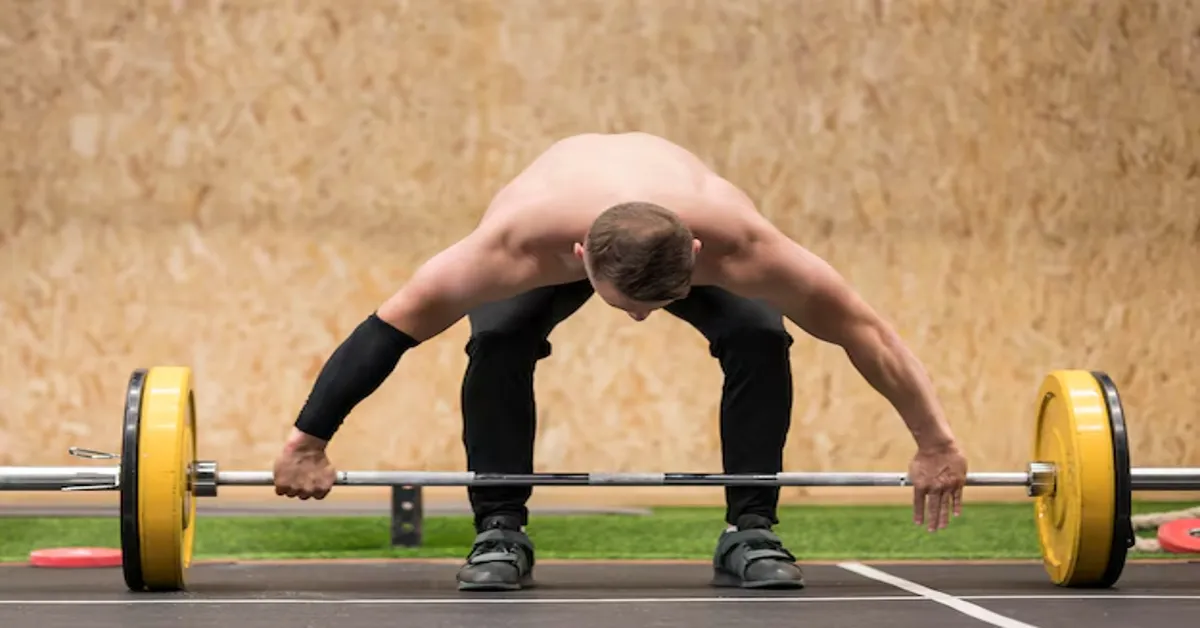The Romanian Deadlift (RDL) form is one of the most effective exercises for building strength in the hamstrings, glutes, and lower back. Despite its popularity, many people struggle with executing it correctly, which can lead to poor results or even injuries.
In this guide, we’ll explore the proper RDL form, the benefits of incorporating it into your fitness routine, common mistakes to avoid, and variations to maximize your workout. Whether you’re a beginner or an experienced lifter, mastering the RDL form can significantly improve your strength and athletic performance.
1. What is an RDL (Romanian Deadlift)?
The Romanian Deadlift (RDL) is a compound exercise that primarily targets the posterior chain, including the hamstrings, glutes, and lower back. Unlike the conventional deadlift, the RDL keeps a slight knee bend while emphasizing a hip-hinge movement, leading to a greater stretch in the hamstrings.
Key Features of the RDL:
- Focuses on eccentric control (slow lowering phase)
- Uses a hip hinge movement instead of excessive knee bending
- Engages the hamstrings and glutes more than a conventional deadlift
- Improves flexibility, mobility, and posterior chain strength
2. Muscles Worked During an RDL
The Romanian Deadlift is a multi-joint exercise that targets several muscle groups:
Primary Muscles Engaged:
✅ Hamstrings – The main focus of the exercise, responsible for hip extension. ✅ Glutes – Activated during the upward movement for powerful hip drive. ✅ Erector Spinae (Lower Back Muscles) – Helps maintain a neutral spine. ✅ Core Muscles – Engaged to stabilize the body throughout the movement.
Secondary Muscles:
✅ Forearms and Grip Strength – Used to hold the weight securely. ✅ Upper Back (Lats & Traps) – Stabilizes the barbell or dumbbells.
3. Step-by-Step Guide to Proper RDL Form
Executing the Romanian Deadlift with correct form ensures maximum benefits and minimizes injury risk. Follow these steps for proper technique:
Step 1: Set Up
- Stand with feet hip-width apart.
- Hold a barbell, dumbbells, or kettlebells in front of you with an overhand grip.
- Maintain a neutral spine and slightly bend your knees.
Step 2: The Descent (Lowering Phase)
- Hinge at the hips, pushing your glutes back.
- Lower the weight while keeping your back flat.
- Keep the weight close to your legs throughout the movement.
- Stop when you feel a deep stretch in your hamstrings (usually mid-shin level).
Step 3: The Ascent (Lifting Phase)
- Engage your hamstrings and glutes to return to standing.
- Keep the movement controlled – avoid using momentum.
- Fully extend your hips at the top, but don’t hyperextend your lower back.
Pro Tips:
✔ Keep your core tight to prevent lower back strain. ✔ Maintain a slight knee bend to avoid overloading the lower back. ✔ Breathe properly – inhale while lowering, exhale as you lift.
4. Common Mistakes and How to Avoid Them
🚫 Rounding the Back – Keep your chest up and back neutral to prevent injuries.
🚫 Bending the Knees Too Much – The RDL form is a hip hinge, not a squat.
🚫 Overextending at the Top – Avoid leaning back at the top to prevent spinal stress.
🚫 Dropping the Weight Too Low – Stop at mid-shin or when hamstrings are fully stretched.
🚫 Using Too Much Weight – Prioritize form over heavy loads to avoid injury.
5. RDL vs. Conventional Deadlift: Key Differences
| Feature | Romanian Deadlift (RDL) | Conventional Deadlift |
|---|---|---|
| Knee Bend | Slight bend | Deep bend |
| Primary Focus | Hamstrings & Glutes | Full-body strength |
| Bar Path | Stays close to legs | Starts from the floor |
| Starting Position | Standing upright | Bar starts on the ground |
| Best For | Hamstring strength, mobility | Overall strength, powerlifting |
6. Benefits of Romanian Deadlifts
🔥 Enhances Posterior Chain Strength – Strengthens the muscles essential for sports and everyday activities.
🔥 Improves Hamstring Flexibility – The eccentric movement increases flexibility over time.
🔥 Reduces Lower Back Pain – Strengthening the glutes and hamstrings relieves stress on the lower back.
🔥 Enhances Athletic Performance – Essential for running, jumping, and explosive movements.
🔥 Improves Posture and Stability – Engages core and back muscles for better alignment.
7. Variations of the RDL form for Different Fitness Goals
💪 Single-Leg RDL form form – Improves balance and targets each leg independently.
💪 Dumbbell RDL form – Easier for beginners and great for home workouts.
💪 Kettlebell RDLform – Enhances grip strength and control.
💪 Deficit RDL – Performed on a small platform to increase hamstring stretch
8. How to Incorporate RDL form into Your Workout Routine
🏋️♂️ For Strength Training: 3-5 sets of 5-8 reps with moderate-heavy weight.
🏋️♀️ For Muscle Growth: 3-4 sets of 8-12 reps with controlled tempo.
🏃 For Athletic Performance: 2-3 sets of 6-10 reps, focusing on power and speed.
9. Conclusion & Call-to-Action
Mastering RDL form is essential for building stronger, healthier, and more flexible hamstrings. Incorporate them into your routine to enhance posterior chain strength and athletic performance.
Frequently Asked Questions (FAQs)
1. Is the RDL good for beginners?
Yes! Start with bodyweight or light dumbbells to master the form.
2. How heavy should I go on RDLs?
Use moderate weight that allows you to maintain perfect form.
3. Can RDLs replace squats?
No, RDLs primarily target the hamstrings, while squats focus on quads.
4. Should I do RDLs on leg day or back day?
RDLs can fit into either leg day or back day, depending on your program.
5. How often should I do RDLs?
1-3 times per week, depending on your training volume and goals.
💡 Ready to level up your training? Try adding RDLs to your next workout and see the difference!









